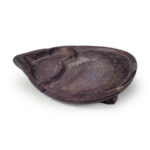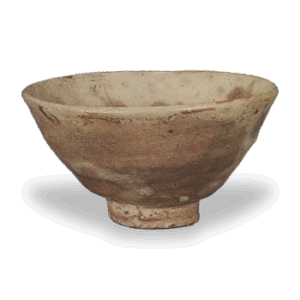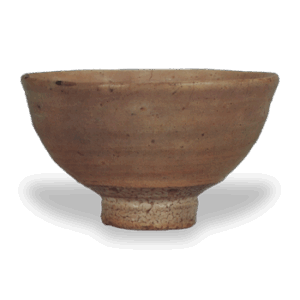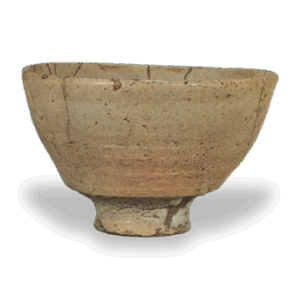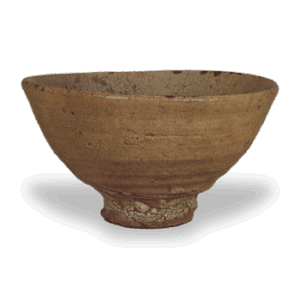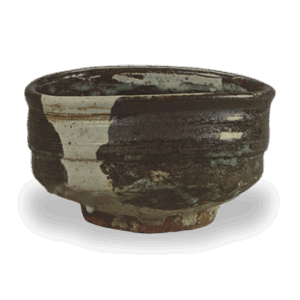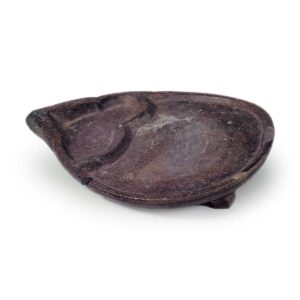
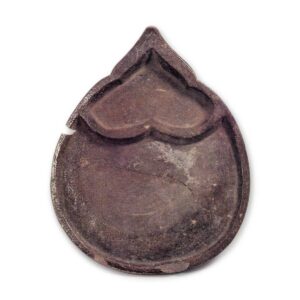
Excavated from Kiln No. 3, Kurozasa, Neura, Oaza-Fukuya, Miyoshi City, Aichi Prefecture, Japan
8th century
Height 2.8cm, Diameter 14.5cm x 18.4cm
Honda Collection
Most ancient inkstones were made from pottery, and there are two basic types: round-faced inkstones and wind-lettered inkstones. As we have already noted with regard to the Shosoin wind-lettered inkstone, the Nara period (710-794) saw the use of the round-faced inkstone, while the Heian period (794-1192) saw the use of the wind-lettered inkstone. During the transitional period between these two types of inkstones, a special type of inkstone with a flat surface in the shape of a jewel was fired mainly in Sanage kilns, as shown here. The inkstone is made of thick clay and is shaped by scraping, giving it a truly elegant form. The border between the sea and the land is also marked by a series of arcs, which correspond to the shape of the head.
The bottom of the vessel has two low pentagonal legs at the rear, sloping the surface of the vessel. The interior surface has circular overlapping marks of the vessel, and the underside is covered with a dark green natural glaze. Naturally, it was fired face down on the vessel to protect the surface to be inked. The inkstone is regrettably broken in two, but it is well preserved in perfect shape. The Hozhu inkstone varied slightly and was fired until the end of the 10th century, but this is the oldest known Hozhu inkstone, and is thought to have been made around the end of the 8th century.

